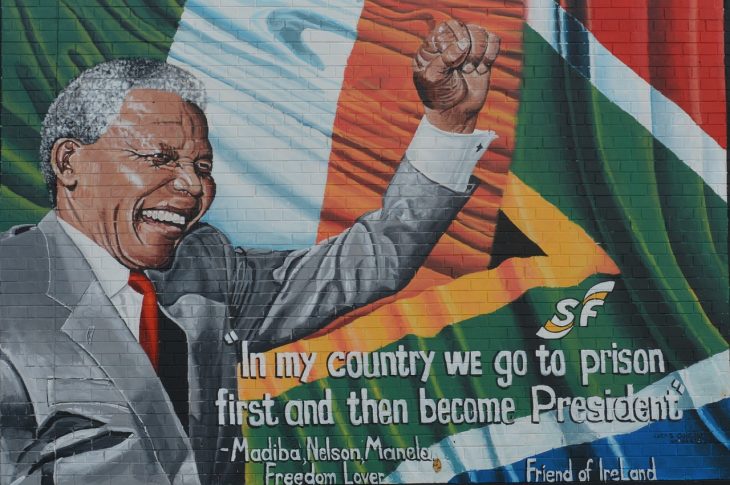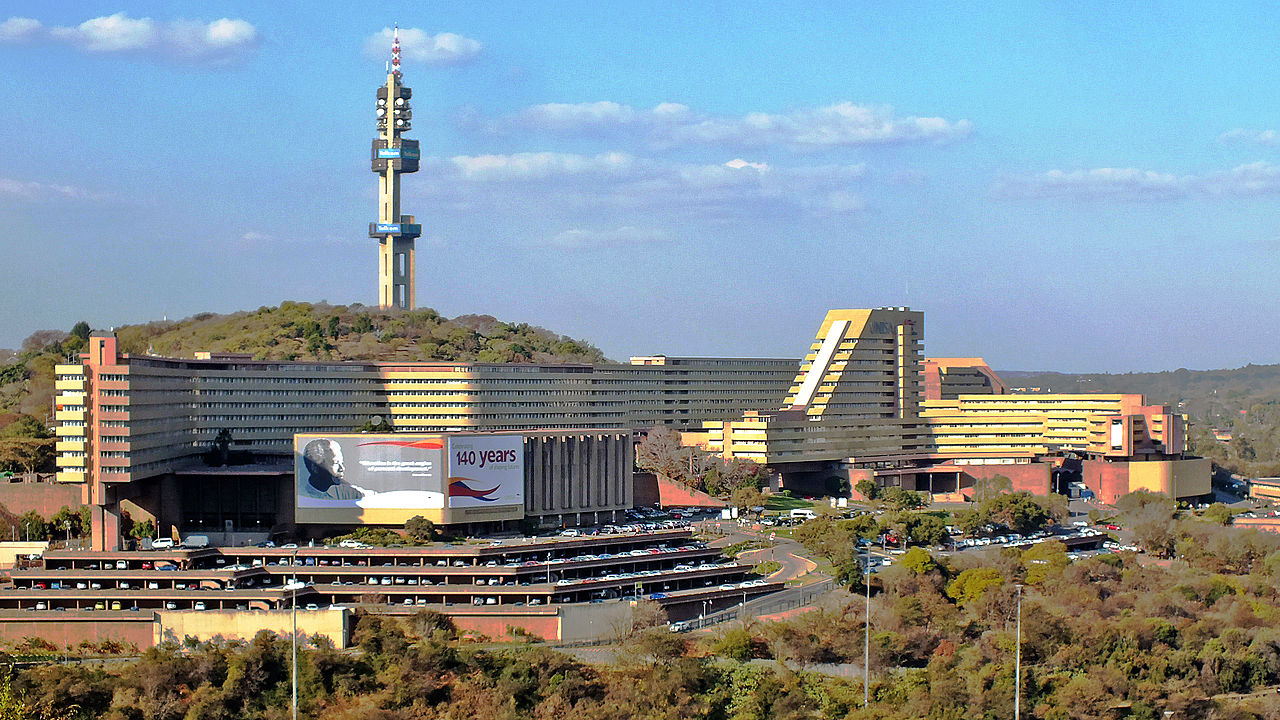
Who would have thought that a black man imprisoned for 27 years will eventually become the next President of South Africa? Nelson Mandela, a name known by many, believed and defied the odds by running for presidency. He won, and the rest was history. But before all of these, Mandela endured discrimination and hardships not every man could take on. However, this only set ablaze the fire that is already kindling inside him. This is the truth. These are all Nelson Mandela facts.
What is even more admirable is that Nelson’s success was not for his own glory, but for putting the end to the racially-oppressive apartheid system in South Africa. He aspired a democratic and inclusive South Africa. Mandela had a dream and worked his way to the top to realize his visions for equality. His story is proof that anyone can change the world if they have a plan and treat people right.
Out of all the leaders in the world, what makes Nelson Mandela so special? For many, Nelson Mandela was strong and admirable because he pursued peace instead of revenge against his political foes. That really says a lot about the kind of man he was. The African leader had a powerful presence and disarmed enemies with his smile. Mandela showed the world what forgiveness looks like. He did not seek self-glory, nor did he hide his faults or failings. His actions proved that peace can indeed be powerful.
How many of our present world leaders are like that? Aspiring leaders around the world should learn about Mandela’s his principles that helped mold a country, and later, the entire world. Did our short discussion on Nelson Mandela inspire you to learn more about him? If it did, here are some more Nelson Mandela facts.
- Nelson Mandela was born on July 18, 1918.
- Mandela was the president of South Africa from 1994 until 1999.
- He had six sisters and three brothers.
- Nelson Mandela was also the president of the African National Congress or ANC from 1991 to 1997.
- He was imprisoned four times over the course of 28 years.
- His full name is Nelson Rolihlahla Mandela.
- Mandela was the first black president of South Africa.
- He was born in Mvezo, South Africa, to the Thembu royal family of the Xhosa tribe.
- Nelson Mandela was a South African anti-apartheid revolutionary.
- Apartheid was a system of institutionalized racial segregation that existed in South West Africa and South Africa.
- Mandela’s government concentrated on demolishing the apartheid, promoting racial reconciliation, and fighting against racism.
- Nelson Mandela’s father, Gadla Henry Mphakanyiswa was a South African tribal chief.
- Nelson Mandela’s mother was Noqaphi Nosekeni.
- Mandela can speak Xhosa. It’s a Nguni Bantu language and one of the official languages of Zimbabwe and South Africa.
- Mandela studied law at the University of Fort Hare and the University of Witwatersrand.
- Mandela was the first president to be elected in a fully representative democratic election.
- After Mandela, South Africa continued to have black presidents (Mbeki, Motlanthe, Zuma, and Ramaphosa).
- Nelson Mandela’s nickname is “Madiba.”
- Madiba was the name of a Thembu chief who, during the 18th century, ruled over a region called the Transkei in South Africa.
- Mandela’s other nickname is “Dalibunga.”
Nelson Mandela got married three times.
Nelson Mandela had three wives, Evelyn Ntoko Mase, who he married in 1944 and divorced in 1958, Winnie Madikizela, who he married in 1958 and divorced in 1996, and finally, Graça Machel, who was his wife until his death.
Evelyn Mase was a South African nurse while Winnie Madikizela was a South African activist. Mandela’s partner until his passing, Graça Machel, is a Mozambican politician and humanitarian.
Nelson Mandela grew up with his siblings in the village of Qunu.
Nelson Mandela grew up with his siblings in the village of Qunu, a small rural village in South Africa’s Eastern Cape Province, where he tended herds as a cattle-boy and enjoyed his blissful childhood. According to Mandela’s autobiography, Long Walk to Freedom, he started being a herdboy at the age of five.
Nelson Mandela regularly attended church as a boy.
The young Nelson Mandela regularly attended church services on Sundays. Due to his Christian background, he later went to a Methodist mission school near his house and studied history, geography, and the English language. From there, he realized how much he really loves African history. Interestingly, Nelson viewed the actions of the European colonizers as a “blessing in disguise” since they brought education and other benefits to the country. Thus, it’s no wonder why Madiba promoted racial reconciliation when he became the president.
Mandela took his secondary education at Clarkebury Methodist High School.
Attempting to gain skills and knowledge to chase his dreams, he took his secondary education at Clarkebury Methodist High School in Engcobo. Engcobo is a town in the Eastern Cape province of South Africa. The school had a Western-style program and was also the biggest school for Black Africans in the region.
Nelson Mandela went to Communist Party gatherings.
In his early 20s, Nelson Mandela frequented Communist Party gatherings. The young Mandela was overwhelmed to see Africans, Indians, Europeans, and other races socializing as equals. Later, Mandela revealed that he joined the gatherings because he saw the struggle of South Africans, how they were being racially based, and how he can best fight it. As this was going on, Nelson continued studying at the University of South Africa.
Mandela went to three different universities from 1939 to 1949.

From 1939 to 1940, Nelson Mandela studied law at the University of Fort Hare. Mandela transferred to the University of South Africa in 1942 and moved to the University of the Witwatersrand, Johannesburg where he stayed from 1943 to 1949. Although Mandela is the most famous alumni of the University of the Witwatersrand, he failed the final examination three times.
He was the only black African student at the University of the Witwatersrand.
When Nelson Mandela studied law at the University of the Witwatersrand, he was the only black African student on the campus. Mandela endured a lot of racism during his time in the university. He eventually cultivated a good relationship with liberal and communist Jewish, Indian, and European students.
He joined a bus boycott in 1943.
Mandela’s impact on the liberal and communist students grew in a relatively short amount of time. In 1943, he marched in support of a triumphant bus boycott to reverse fare hikes. According to Nelson Mandela’s book Long Walk to Freedom, Mandela marched with ten thousand others for the Alexandra bus boycott. The success of the campaign sparked a flame for equality in young Mandela’s heart.
Nelson Mandela became a member of ANCYL's executive committee in 1944.
In 1943, Mandela also met the South African activist, Anton Lembede. From the get-go, Mandela and Lembede had the same opinion when it came to many things.
To bring their ideas to life, Mandela and Anton Lembede reached the president of the African National Congress, Alfred Xuma. They convinced him that ANC or the African National Congress is in need of “young blood” to mass mobilize the Africans to fight for change.
Accordingly, the African National Congress Youth League or ANCYL was founded on Easter Sunday 1944. Lembede was the president and Nelson Mandela, a member of its executive committee.
Nelson Mandela became a father in February 1945.
Evelyn Mase and Nelson Mandela had their first child in 1945 and their second child in 1947. Unfortunately, Mandela’s second child died of Meningitis nine months later. The couple initially lived with Evelyn’s relatives but soon rented a house in the township of Orlando, Soweto, South Africa in early 1946. Mandela loved his life at home.
Mandela was sentenced to nine months in prison labor in 1952.
By 1947, Nelson Mandela was elected and served on the executive committee of the ANC’s Transvaal Province branch, under regional president C. S. Ramohanoe.
In April 1952, Nelson started to work at a law firm owned by a communist. In that same year, the Suppression of Communism Act ordered the arrest of Nelson Mandela and founded him guilty of statutory communism. Mandela was sentenced to nine months in prison labor.
Mandela started the first African-owned law firm in South Africa.
After Mandela’s nine months in prison labor, he opened his own law firm in downtown Johannesburg. By that time, that law firm was the only African-run law firm in South Africa. However, the authorities hated Mandela’s law firm and gave him a had time. Nelson was forced to move to a less busy location after authorities removed his office, citing the Group Areas Act.
Evelyn Mase suspected that Nelson was having an affair with ANC members.
In 1954, Nelson Mandela’s relationship with Evelyn Mase took a hit. One of the reasons was Evelyn’s suspicion that Nelson was having an affair with ANC members, Ruth Mompati and Lillian Ngoyi. Nelson and Evelyn divorced in 1958.
Sports gave Nelson Mandela a balanced life.

Sporty Nelson Mandela facts: he loved sports. According to him, being active granted him a well-balanced life. Nelson was one of the faces of the sports world — he had a strong passion for boxing, soccer, and rugby, the last named as the most popular sport in South Africa today.
Mandela supported South Africa national rugby union team Springboks’ win. They dominated the Rugby World Cup glory in 1995, which was hosted and won by South Africa. It was the first Rugby World Cup in which every match was held in one country.
He believed that sports are more effective than the government in breaking down racial barriers.
Aside from being a sports fan, Nelson Mandela believed that sports can be used to support the activism movement. He once stated that sports has the capability to change the world, the power to inspire, and above all, the power to unite people in a way that little else does.
Furthermore, Nelson believed that sports is a good way to get the young engaged in more serious issues. For him, sports is the language of the youth, and the game brings hope to both its fans and players. Nelson believed that sports, when used effectively, could break down racial barriers.
Mandela is one of the founders of Umkhonto we Sizwe.
In 1961, he became one of the founders of Umkhonto we Sizwe, the armed wing of the African National Congress or ANC. This was done in the wake of the Sharpeville massacre, one of the most extreme demonstrations against apartheid in the country.
In this brutal massacre, police officers shot at a crowd, killing and injuring over 200 individuals. Formed to resist the old practices of the South African government, Umkhonto we Sizwe was ran from 1961 to 1994.
Mandela spent 27 years in prison.
On August 5, 1962, the authorities captured Nelson Mandela and his fellow activist Cecil Williams near Howick, South Africa.
Nelson Mandela had tuberculosis in prison.
The 70-year-old Mandela suffered tuberculosis in prison. He was ill for weeks, coughing up blood and struggling with breathing. Provided with proper treatment, Mandela recovered from the illness.
Due to the unhealthy environment of his cell, Mandela was moved to Victor Verster Prison in 1988. He stayed in the warder’s house in Victor Verster Prison and used that time to finish his LLB degree.
Interestingly, while staying there, authorities allowed visitors to see Mandela thus giving them the opportunity to communicate with the ANC or African National Congress.
He was freed from prison in 1990.

In 1990, former State President of South Africa, Frederik Willem de Klerk released Nelson Mandela due to international and growing local pressure as well as whispers of racial civil war. After coming out of prison, Mandela gave a speech about his insights for his countrymen.
Mandela sought the presidency in his mid-70s.
On April 27, 1994, to prepare for the upcoming election, the African National Congress began to campaign for Nelson Mandela. Mandela’s campaign focused on the RDP or Reconstruction and Development Programme, whose goal was to create a million houses in just five years. Nelson also focused on providing better water, electricity access, and free education for his countrymen.
Mandela became the first black president of South Africa on May 10, 1994.
Nelson Mandela won the presidency via landslide. He was inaugurated on May 10, 1994 in Pretoria, which was televised and watched by billions of viewers across the globe. His presidency lasted until June 26, 1999. Historical Nelson Mandela facts!
Mandela's priority is national reconciliation.
Being a president was physically challenging for the 76-year-old Mandela as he had several ailments. Nevertheless, he served with full energy, making national reconciliation the primary task of his administration.
During his presidency, he also hosted and met several celebrities and other leaders such as Michael Jackson and Queen Elizabeth II.
Nelson Mandela inherited an "uneven economy."

Nelson Mandela’s administration acquired an economy with a huge gap in wealth and services between black and white communities. With over 35 million in population, more than 20 million individuals lacked electricity or standard sanitation. Furthermore, 2 million can’t afford the schools, 33% of the population are illiterate, and more than 10 million people don’t have access to clean water. Above all, more than 30% were unemployed and nearly half of the population are living in poverty.
The country's welfare spending drastically increased.
During Nelson Mandela’s presidency, South Africa’s welfare spending drastically increased. His government organized a parity in grants for various communities, such as old-age pensions, disability grants, and child maintenance grants as well as balancing the privileges for both black and white people.
Furthermore, Mandela introduced free healthcare for children under six and pregnant women in 1994. Before he left the office in 1999, Mandela’s administration claimed to provide hundreds of thousands of houses, giving shelter to millions of people, constructing electricity grids, providing better water access, creating telephone lines, constructing clinics, and sending millions of children to school.
Mandela only wanted to serve a single term.
Presently, South African presidents can serve two terms. However, in the 1996 constitution of South Africa, the president can only have two consecutive five-year terms. Because Mandela had only wanted to serve one term, he did not even attempt to amend the limit.
Hence, the famous “Madiba” retired from active politics to enjoy the twilight of his life in several philanthropic activities and with his family.
Interestingly, Mandela also announced that he was “retiring from retirement”. What did this mean? At age 85, he returned to the spotlight and inspired different organizations, supported sports, gave motivational talks, met important people, and even traveled to the United States to speak with Senator Hillary Clinton, then-Senator Barack Obama, and President George W. Bush.
Nelson Mandela passed away at 95.
In February 2011, the 93-year-old Mandela was hospitalized due to a respiratory infection which was successfully treated. Two years later, the infection returned, and Mandela succumbed to it on December 5, 2013. He was 95 and was surrounded by his family at the time of his death. Some sad Nelson Mandela facts!
Nelson Mandela has a biographical film.
Nelson Mandela facts you need to know if you love movies! The 2013 biographical film Mandela: Long Walk to Freedom is a British-South African movie based on the 1995 autobiographical book Long Walk to Freedom by Mandela.
The film features the highlights of Mandela’s very colorful life, including his younger years, his almost three decades of life in prison, and his experiences of becoming the first black president of South Africa. The movie strongly focused on how Nelson restored the country’s once segregated society.
Mandela received more than 250 awards.
In his lifetime, Mandela received more than 250 awards. The most noteworthy of them all is the Nobel Peace Prize in 1993, which he and former State President of South Africa Frederik Willem received.
July 18 is Nelson Mandela International Day.
People celebrate Nelson Mandela International Day every July 18th. The United Nations first proclaimed this special day in 2009 to remind people around the world to do good things for others, just like what Mandela showed.
Mandela is South Africa's "Father Of The Nation"
Even before his death where he was commemorated even greater, Nelson Mandela was already being called the “Founding Father Of Democracy” due to his contributions to society. Beyond South Africa, Madiba is also a global icon. Many people consider him to be one of the most revered figures of our time, while others see him as a modern democratic hero.
Nelson has repeatedly said that he does want to be remembered just for his achievements, but for also how he came back up to achieve them. One of his most famous quotes reinforces this notion, “Do not judge me by my successes, judge me by how many times I fell down and got back up again.”
Was this page helpful?
Our commitment to delivering trustworthy and engaging content is at the heart of what we do. Each fact on our site is contributed by real users like you, bringing a wealth of diverse insights and information. To ensure the highest standards of accuracy and reliability, our dedicated editors meticulously review each submission. This process guarantees that the facts we share are not only fascinating but also credible. Trust in our commitment to quality and authenticity as you explore and learn with us.
